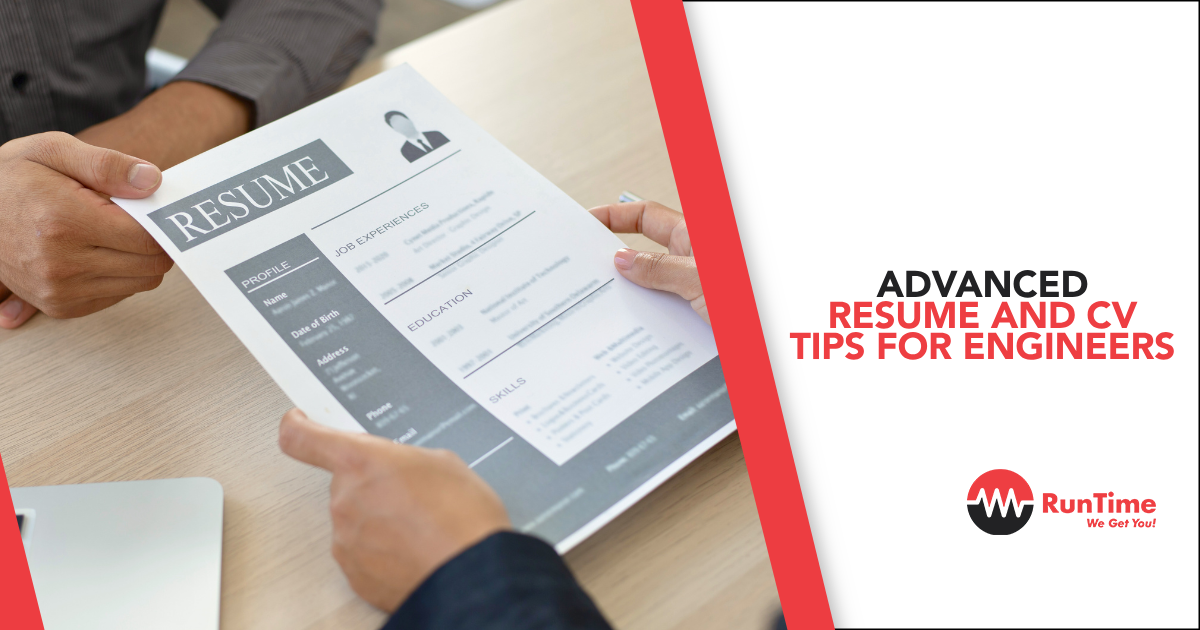For engineers, a resume or CV isn’t merely a document; it’s a blueprint. It outlines the architecture of our professional journey, detailing our skills, experiences, and achievements. It’s our professional footprint, the first impression we leave on potential employers. As such, constructing an effective resume or CV is akin to designing a well-engineered structure — it requires precision, detail, strategy, and of course, some creativity.
Resumes vs. CVs: Understanding the Difference
Before we delve in, it’s crucial to distinguish between the two. Resumes are typically one to two-page documents focusing on relevant skills and experiences, tailored for a specific job usually common in the US. CVs (Curriculum Vitae), on the other hand, are longer, more detailed and common in the UK and Australia. They cover your entire career and include details like projects, publications and presentations.
This distinction is critical because depending on your target job and geographic location, you may need a resume, a CV, or sometimes both.
The Engineer’s Guide to Building a Robust Resume or CV
1. Strategic Planning: The Foundation
Just as every engineering project begins with a plan, so should your resume or CV. Before you start writing, reflect on your career goals, skills, experiences, and the job requirements. Understand what the employer is seeking and how you can meet those needs. This strategic planning forms the foundation of your document and guides your writing process.
2. The Power of Keywords: SEO for Your Resume
In this digital age, many companies use Applicant Tracking Systems (ATS) to screen resumes. These systems filter resumes based on keywords — specific words or phrases related to the job description. Hence, optimizing your resume for keywords is essential.
Start by analyzing the job description. Identify the crucial technical and soft skills, tools, and software that the employer is seeking. Then, incorporate these keywords naturally into your resume or CV, especially in the skills and experience sections.
But remember, while keywords can get you past the ATS, they won’t necessarily land you the job. Balance keyword optimization with clear, engaging content that captures the human reader’s attention.
3. Structure and Layout: The Art of Visual Engineering
Engineers are no strangers to the importance of structure and layout in design. The same principles apply to your resume or CV.
Divide your document into clear sections such as contact information, objective (optional), skills, experience, education, and additional sections (like certifications, projects, publications) as needed. Prioritize the information based on relevance to the job — put the most important information first or on the first page.
Ensure that your document is visually appealing and easy to read. Use a professional font, ample white space, and bullet points to enhance readability. Avoid long paragraphs, and keep your content concise and to the point.
4. Showcasing Your Skills: The Cornerstone of Your Resume
For engineers, showcasing a mix of technical and soft skills is crucial. Include a dedicated skills section in your resume or CV and list your skills in a clear, organized manner. Group them into categories like technical skills, software proficiency, and soft skills.
Don’t merely list your skills; demonstrate them. Use your experience and projects sections to show how you’ve applied these skills in real-world situations. Remember to quantify your achievements where possible — numbers catch the reader’s attention and provide a tangible measure of your success.
5. Experience and Projects: The Pillars of Your Document
Your experience and projects sections are the pillars of your resume or CV. They provide a snapshot of your professional journey and your capabilities.
When describing your work experience, focus on your achievements and contributions rather than just your duties. Use action verbs and quantify your accomplishments. For example, instead of saying “Designed a data management system,” say “Designed a data management system that improved data retrieval efficiency by 30%.”
If you’re a recent graduate or changing careers, you might lack relevant work experience. In this case, highlight your projects — both academic and personal. Detail the project objectives, your role, the tools or software you used, and the outcomes. Projects can demonstrate your practical skills, creativity, and problem-solving abilities, compensating for lack of work experience.
6. Continuous Improvement: The Engineer’s Mantra
In engineering, continuous improvement is a mantra. Your resume or CV is no exception. Regularly update your document to include new skills, experiences, projects, or certifications. Even if you’re not actively job searching, maintaining an updated resume or CV can save you time when the right opportunity comes along and can provide a useful tool for performance reviews and career planning.
Resumes and CVs: A Critical Engineering Task
Writing a resume or CV may not involve complex calculations or design software, but it’s a critical engineering task. It requires us to analyze the job market, understand the employer’s needs, and design a document that effectively showcases our skills and experiences.
As engineers, we possess the analytical thinking, attention to detail, and problem-solving abilities to master this task. So let’s approach our resumes and CVs as we would any engineering project — with strategy, precision, creativity, and continuous improvement. After all, they are the blueprints of our professional journey, a testament to our engineering prowess.









